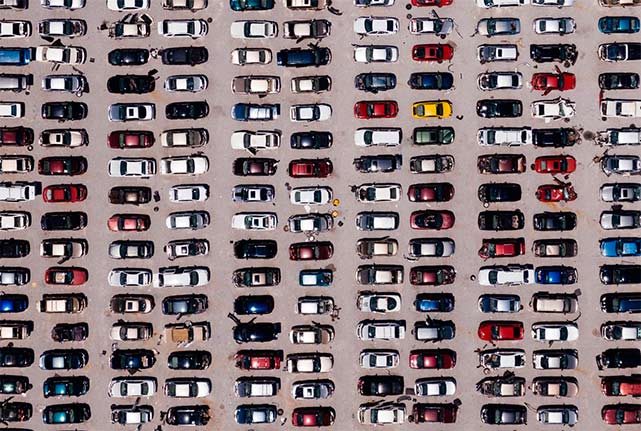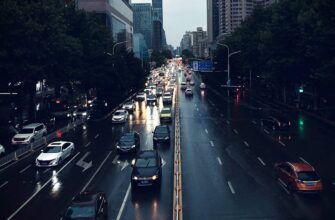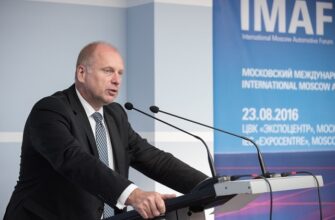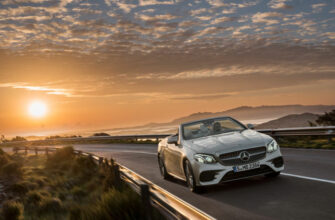Political context of the auto market development is determined by strategic planning of the state power, as well as by its tactic orders and programms. The authorities, influencing inner economic state and international trade both, can do everything with national market: develop it or change it or even destroy it. What is state influence on the Russian auto market?
Russian auto market has a thin time now. The vehicles are bought by people and companies, who have less money now (or real disposable income) – so, effective demand is reducing. Possibility to buy a vehicle in credit decreased too, first of all as a result of unclear finance and macroeconomy situation in the country. Analytics of PWC are expecting market fall at -35%. AEB in January 2015 had expected market down at -24%, while in July 2015 it revised forecast to -36% (car and LCV sales must result 1.55 mln units in 2015).
According to state strategical plan on the country’s development till 2020, announced in 2008, we’re on the second stage of social reforms (from 2013), which have to transfer the Russian economy to new innovative technological basis. On June 20, 2015 the power made decision on elaboration and realization of National Technological Initiative on global markets, which also provides attention to advance technologies. About 20% of innovations is expected in auto industry.
The automotive industry (which is meant as global production capacities transfer to Russia) – is one of key priorities of the Russian government which takes considerable part of the state support. Vehicle consumption, which feeds automakers as well as autodealers and connected markets, is under government’s close attention.
We’ll look at 2 kinds of 2015 state programms, touching Russian auto market: those of direct influence and indirect one. Main target of the direct influence is demand for vehicles, assembling in Russia.
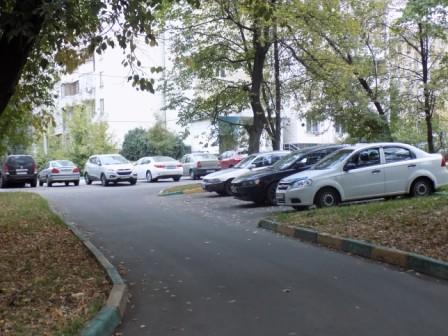
If we focus on target measures, in 2012 – 2015 Russia launches special programme «Automotive industry» as a part of state programme «Development of industry and increase of its competetive possibilities».
The programme combines measures on vehicle and component production on the territory of Russia, national R&D foundations. As a result of the programme’s execution (investment totals 796 bln RUR including 106 bln RUR in 2015), production in Russia will count by 2020 3’136’000 car units and 240’000 LCVs. Vehicle production in Russia will have to cover up to 80% of the country’s auto sales. Car market saturation will reach 363 cars per 1’000 people (against 284 now, according to «Za rulem» magazine).
Russian ministry of Industry and Trade (otherwise Minpromtorg), according to state Websites, launched following actions:
1. production support (energy cost repayment, compensation of transfer to Euro-4-5 fuel and job security in 2014), investments 103 bln RUR in 2015
2. support of vehicle fleet development (recycling programme, programme of preferential auto crediting and preferential auto lease). As of September 8, 2015, more than 228’000, 137’000 and 18’000 vehicles were sold through these programs respectively. Planned investment relating these programs for 2015-2018 amount to about 31.6 bln RUR.
3. measures for import reduce (revise of technical requirements)
4. support of constant demand (sales of vehicles, assembled in Russia). About 11 bln RUR is allocated to purchase vehicles for federal government bodies. However, a limitation will enter into force since 2016: heads of federal government authorities will be able to order only vehicles with an output of up to 200 hp and at price up to 2.5 mln RUR; heads of federal agency – at price up to 2 mln RUR (resolution «On establishing the requirements to some products, works and services purchased by the state bodies and state extra-budgetary funds» from September 2, 2015).
5. support of bearing production (R&D of the component)
6. production of Luxury vehicles for authoriries on united platform, investments 3.6 bln RUR in 2015
7. transfet of housing and communal state services to gas fuel in order to assist gas filling facilities. About 3 bln RUR were spend by the government for gas infrastructure support.
Car production decreased in January-July 2015 against January-July 2014 by -26.1%, rentability of the Russian auto market fell by 10-15% in 2015. Minpromtorg expected in 2015 fall of the market at -50%, but as a result of state support it now previews -24% market decrease.
Vehicle recycling and trade-in
Source of the programme is target recycling duty, which serves as a base of discounts at 40’000-350’000 RUR for buyers. The discounts will be compensated by the state then. On March 18, 2015 decision №244 of the Russian government provided 10 bln RUR budget in Q1 2015 to promote production of 110’000 vehicles in Russia, in Q2 2015 it spent 5 bln more. Totally for demand promo on the Russian market in 2015 was spent about 25 bln RUR from April 01, 2015.
Crediting
On April 16, 2015 decision №364 of the Russian government previewed repayment pf profit difference with 2/3 state rate to the banks by state preferential credit programme. The above credit sales will account 200’000 units from April to December 2015 (not less than 10% of total Russian auto saales in 2015). Federal investments are 1.5 bln RUR.
A similar program for stimulation of sales of Russian vehicles in foreign countries is under development. It will be launched in Kazakhstan and Belarus. Program condition are not yet available.
Leasing
On May 08, 2015 upon decision №451, the Russian government decided to subsidize discount for lease agreements, concluded in 2015. This is the way how the government plans to provide auto market sales (and production capacities) at 16’000 units, including 10’000 cars. Federal investments account 2.5 bln RUR.
On May 15, 2015 came into force state programme, which allows consumer to lease vehicles with 10% discount. The discount is repayable to leasing companies from state budget.
Insurance
Insurance tarifs were not left aside from attention of the Russian government. According to order of Bank of Russia, insurance companies were authorized to increase OGASO tarifs starting from April 12, 2015 (for most vehicles besic rate increase is +40%). This will compensate current profit reduce to insurers.
In addition to federal programmes, auto market is regulated from regions – by industrial parks or zones of advanced development. In the zones, strategically suitable for state programme realization, the most profitable conditions for auto makers and component producers are agreed (industrial clusters). These objects are controlled by Ministry of Industry and Development (Mineconomrazvitie).
The concept of development till 2020 previews creation of new development centers in the South of Russia, in Eastern Siberia and in the Far East.
25 innovative territorial clusters are already created in Russia up to 2015, it is spread in 20 subjects of the Federation.
In particular, on August 28, 2015 was created special territory of advance development (government order №899). In the Far Earst Mazda & Sollers capacities were located; from January 28, 2015 it receives state help in construction and tax preferences for most of duties for 5-10 years. In Volgograd Volgabas will get 7 year tax preferences and partial compensation of credit interest.
In present Minpromtorg launched reimbursement of expenses for credits, received in Russian banks in 2014-2016 for clusters’ investments projects.
Cluster development is subsidized by the State. So, an automotive industry and petrochemical innovation cluster in Nizhny Novgorod will get 31.2 mln RUR of federal subsidies.
Transportation of auto market goods is important for automarket, as well as for any country’s industry. This topic will see strategical changes.
According to the Concept, goal of the Russian transport policy is to achieve global transit position; share of appropriate roads will count 48.2% in 2015, by 2020 the country will have multiple transport net as a part of global system.
Special part of the transport strategy is subsidy of strategically important products’ freight cost (in the list there is Southern and North-Western federal regions subsidized in favor of Far Earst production).
Care about ecological transportation makes trend for fuel requirements. In realisation of transport strategy transfer to Euro-5 and Euro-6 standards is scheduled. Vehicles, which are not correspond with Euro-5, are allowed to be produced only till December 31, 2015. On August 27, 2015 the government was also careful regarding net of electric vehicles’ filling stations: law amendments were done for creating facilitated procedure for it.
Energy is considerable part of any production cost, and for auto market too. According to Concept, new energy technologies and global energy points will be created in Russia. Energy will be “liberalized” up to market prices, and its subsidies have to be cancelled by 2015. Energy tarif will be $0.15 – 0.16 per kW in 2020.
On our view, no other possible influence – considerable novelties in tax or jobs regulation – is provided.
The most encouraging part of the Strategy was marked in policy of improvement people’s wealth. In 2015 it was planned to decrease poor segment to 7.8% (those who live less than minimum life expense is) and to increase share of middle class (income more than 6 minimum life expense amounts) up to 52-55% in 2020. Especially realisation of the mentioned intend could support auto market better than any other special programme. Consumer capacity growth influence consumer expenses increase, including in favor of auto market.
Methodological comment.
In the article we consider political context, otherwise a number of political events, which influence on auto market players and, as a result, on the entire market, in 2015.
Because Russia is Federation, power in the country is located on two levels: federal (or all-Russian) and regional (local, in regions). We’ll study federal influence, consisting of President, Parliament, Government and Court.
In general, Russian strategy was not changed in 2015. The country just continued to move by earlier way. In 2008 in Russia was authorized Concept of long-term social-economy development till 2020. Remarkable thing in the programme is that the government, linking strategical objectives with transportation and energy goals, counts on territorial industrial clusters, hoping it can solve problems of regional diversity and production both.
According to the Concept, «in 2015 – 2020 Russia has to enter TOP5 countries by GDP (consumer capacity)».
Russia entered WTO on August 22, 2012. Due to this entrance Russia was forced to make some changes in laws and provide other actions, which are noted in 2015.
Key sources of the article: President of Russia, Russian Parliament, Russian government
